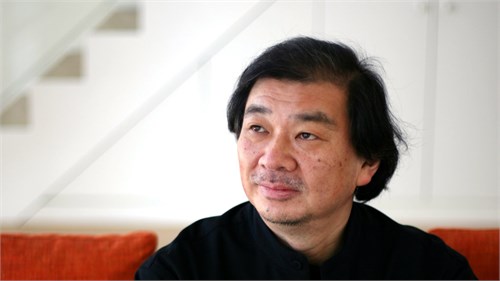
Shigeru Ban is a Japanese and international architect, most famous for his innovative work with paper, particularly recycled cardboard tubes used to quickly and efficiently house disaster victims. He was profiled by Time magazine in their projection of 21st century innovators in the field of architecture and design.
坂茂(Shigeru Ban),日本和国际建筑师,以纸的创新性应用而著名,特别是快速高效的运用于灾区受难者安置房的可循环纸板管。美国《时代杂志》把坂茂描绘成“21世纪建筑设计领域的创新倡导者。”
………………………………
Last week we had the opportunity to interview this year’s Pritzker Prize winner, Shigeru Ban,within his MetalShutters Houses in New York City. The Japanese architect, whowas a member of the Pritzker jury from 2006-2009, gave us his thoughtful,humble response to receiving architecture’s most prestigious prize, saying thewin is an “encouragement for me to continue working to make great architectureas well as working in disaster areas.”
上周(2014/03/25)我们(ArchDaily)有机会采访了2014年度普利茨奖获得者坂茂先生,访问在他位于纽约市的Metal Shutters Houses事务所进行。坂茂,日本著名建筑设计师、2006-2009普利茨奖评审团成员之一,在采访中对获得建筑界的最高荣誉“普利茨奖”给了我们深刻的、谦逊的的回答,“获奖是对我的一种鼓励,继续努力创造更好的建筑,同时继续工作在灾区。”
When we asked him how he remains so committed tohumanitarian efforts, balancing them with his other commissions, he explained:“I also like to make monuments because monuments can be wonderful treasures forthe city, but also I knew many people were suffering after the naturaldisasters, and the government provided them very poor evacuation facilities andtemporary housing. I believe I can make them better.”
当我们问及他是如何投入到人道主义事业中去的,以及如何和其他委员会成员权衡时,他解释道:“我也喜欢设计纪念碑,因为纪念碑是一座城市绝妙的宝藏。但是我知道很多人遭受着自然灾害后的苦难,政府只是给他们提供很简陋的撤离设施和临时居所。我相信我能做的更好。”
Read the entire interview transcript, in which Bandiscusses his innovative use of materials and gives us a few anecdotes aboutstudying in the US, after the break.
在所记录的全部采访手稿中,坂茂先生讨论了他创新性的材料运用,之后还给我们分享了他在美国求学时的一些轶事。
Shigeru Ban: I’m ShigeruBan, I’m the founder of Shigeru Ban Architects. Now, I have offices in Tokyo,Paris, and New York. Also I’m the founder of an NGO, Voluntary ArchitectsNetwork, working in disaster areas. Architecture is my life. And also somethingI enjoy the most.
坂茂:大家好,我是坂茂,Shigeru Ban Architects事务所的创始人,现在在东京、巴黎和纽约都有办公室。我也是非政府组织Voluntary Architects Network的创立人,致力于灾区重建工作。
ArchDaily:How do you see your role as an architect?
ArchDaily:作为一名建筑设计师,您是如何看待自己的?
—
SB: When I was younger, when I was a student, no one was talking aboutworking in a disaster area. I was quite disappointed when I became anarchitect, because mostly we are working for privileged people who have moneyand power and we are hired to visualize their power and money with monumentalarchitecture. I also like to make monuments because monuments can be wonderfultreasures for the city, but also I knew many people were suffering after the naturaldisasters, and the government provided them very poor evacuation facilities andtemporary housing. I believe I can make them better. That’s really an importantrole for myself: to continue working in disaster areas.
坂茂:当我年轻还是一个学生的时候,没有人谈论在灾区工作。在我成为建筑设计师的时候,我更加失望因为我们中的大部分人只是为那些有钱有势优越的人群工作,雇佣设计师为他们打造不朽的建筑来凸显他们的势力和钱财。我也喜欢设计纪念堂,因为纪念堂是一座城市绝妙的宝藏。但是我知道很多人遭受着自然灾害后的苦难,政府只是给他们提供很简陋的撤离设施和临时居所。我相信我能做的更好。对于我自己而言,那才是一个真正重要的角色:不遗余力的工作在灾区。
ArchDaily: Howdid your interest in materials emerge?
ArchDaily:您对材料的兴趣是如何显现出来的?
—
SB: Actually, I don’t like to be influenced by the fashionable style ofthe day. Always, in architecture, there are many styles that are fashionable orvery popular, but I like architects like Frei Otto or Buckminster Fuller, whomade their own styles. So when I made the paper/cardboard tube, it was quitestrong, so I thought it could be a structural material. People normally thinkdeveloping something new is more high tech, but even using raw material, humblematerial, the existing material around us, can be used as a structure–givingthem more meaning and more function. So what I’m doing is not really inventingsomething new, i’m just using existing material around us as part of thebuilding structure.
坂茂:实际上我不喜欢被今天的时尚风所影响。在建筑界,总有许多的设计风格是时尚的、有名的,但是我喜欢像弗雷·奥托(德国建筑大师)、里查德·巴克明斯行·福勒(美国建筑大师)那样的建筑设计师,他们做着属于自己的风格。当我在做硬纸管时,它非常的结实,所以我认为硬纸管能成为一种建筑材料。通常人们认为开发某一种新型材料需要高科技,实际上即使用我们身边的原材料、低廉的材料以及现有的材料都能被用作是一种建筑构成——赋予他们更多的意义和功能。所以,我真正在做的不是在创造新的东西,只是在使用我们身边存在着的材料作为建筑构成中的一部分。
ArchDaily: Doyou approach your pro-bono work the same way you approach your othercommissions?
ArchDaily:您接慈善性质的项目跟接其他的项目一样吗?
—
SB: There is no difference working for a normal building commission orthe disaster relief projects I do as pro-bono. The only difference is if I’mpaid the fee or not. For me, it’s the same. Business-wise, it’s quitedifficult, actually. I spend lots of time on these pro-bono projects, but myfirst instruction is the same–building with a fee or not. And also, my partnersare doing my projects together, so i can spend my on time on pro-bono projects,which is a very important role for me as an architect.
坂茂:无论是做一个标准的建筑项目还是做一个慈善性质的赈灾项目,对我而言没有什么不同。唯一的不同是我获得了报酬与否。对于我来说,都一样。从商业价值角度来说,两者之间的区别很大。我花很多的时间在慈善项目上,但是我的出发点是一样的,即建筑不因有无报酬而存在。同时,我父母和我一起做项目,那么我能够抽出时间做我自己的慈善项目,对作为建筑设计师的我而言,是一个非常重要的角色。
ArchDaily: Whatwas your experience as an architecture student?
ArchDaily:当您还是建筑系的学生时,您有过什么样的经历?
—
SB: After I finished high school I came to the US without speakingEnglish. When I was in high school I wanted to go to Cooper Union. There was aJapanese magazine called A+U and in 1975 they had a special issue about JohnHedjuk and Cooper Union, which made me want to come to the US. Nobody knewabout Cooper Union, so I had to come to the US but they didn’t accept foreignstudents. So I started first at Sci Arc and then I transferred to Cooper Union.I was very lucky as a result. I experienced both very unusual schools– Sci Arcin the West Coast and Cooper in the East Coast. They are both very unusualschools with very strong leaders. I experienced both extremes in the West Coastand the East Coast. I had a special education with very good professors.
坂茂:在日本完成高中学业以后,我就去了美国,但是对英语一窍不通,在高中时期我就想去美国的库伯联盟大学。有一个日本的杂志《建筑与都市》(A+U)在1975年有一期特刊是关于赫迪尤克(现代风格白色派倡导大师)和库伯联盟大学,因此我想去美国。因为没人知道库伯联盟大学,所以我想去美国但是他们不接收外国学生。一开始,我在南加州建筑研究院学习,之后才转到库伯联盟大学,结果我是很幸运的。我在两所与众不同的学校都待过—位于西海岸的南加州建筑研究院和位于东海岸的库伯联盟大学,他们都是拥有雄厚领导团体的与众不同的学校,在两所大学里,我经历了两种极端。我从一些很优秀的专业教授那里获得了特别的教育。
ArchDaily: Whatinspires you?
ArchDaily:是什么激发您的灵感?
—
SB: I’m always amazed by the craft of the local people, wherever I go.Local craft and local materials impress me–to think about in design. Now,working in the Philipines after the earthquake and typhoon, still local peoplelive in traditional houses with bamboo. Bamboo is used for structure andscreens. I know that bamboo is such a difficult material to use as a structureby meeting the building regulation. But still there are many local, vernaculartechnologies used in the Philipines, so I tried to combine the paper tube,which is locally available, with a bamboo screen to design a temporary shelterfor the victims of the typhoon.
坂茂:无论我走到哪里,我总是会对当地的手工艺术惊奇不已,当地的手工艺术和当地的材料给我留下深刻印象——用设计的思维思考。如今,菲律宾当地人工作在被地震和台风肆掠的菲律宾,仍然住在传统的竹制房子里,竹子被用作建筑结构和屏障。我知道竹子是一种非常难以利用的自然材料作为结构的一部分来满足建筑要求,但是依然还是有很多当地流传下来的技术在菲律宾流行,所以我试着把竹子屏障和纸质管(在菲律宾当地才有)结合起来,为台风的受害者设计了一个临时的避难所。
ArchDaily: Howdo you feel about winning the Pritzker Prize?
ArchDaily:获得普利茨奖,您有什么感言?
—
SB: It’s such an honor, but I don’t know how to understand the situationyet. Because I feel it’s too early for me, because I have not achieved acertain level as an architect yet. So I’m taking this as a kind ofencouragement for me to continue working to make great architecture as well asworking in disaster areas. Also, I’d like to continue teaching. Education is avery important part of my activities. Even now, I don’t know the meaning ofreceiving this award yet, all I can tell you is that I don’t want to bechanged. I just want to keep doing the same thing.
坂茂:是一种荣誉,但是我不知道该如何去理解这种情形,因为我觉得对我而言为之过早,作为一个建筑设计师我还没有达到某个程度,所以我把它当做是一种鼓励,继续努力创造更好的建筑,同时继续灾区的赈灾工作和教育事业工作,教育是我毕生实践中的一个重要组成部分。到现在为止,我还不知道获奖的意义在哪里,我所能告诉你的是我不想被改变,我只是想不停的做同样的事情。
………………………………
2014年普利茨奖入选作品:
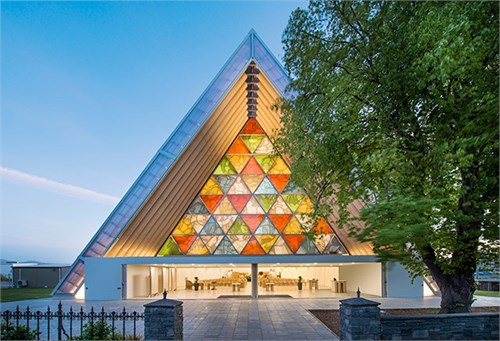
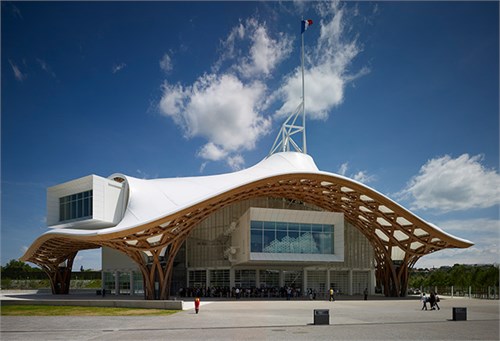


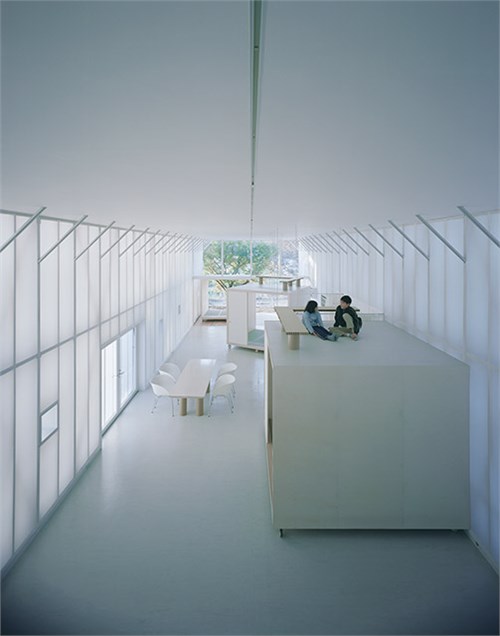
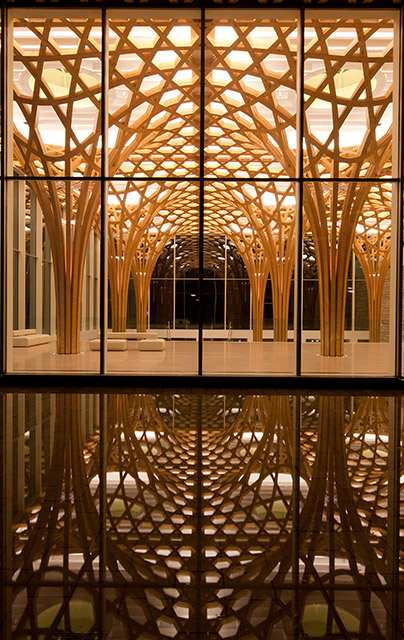
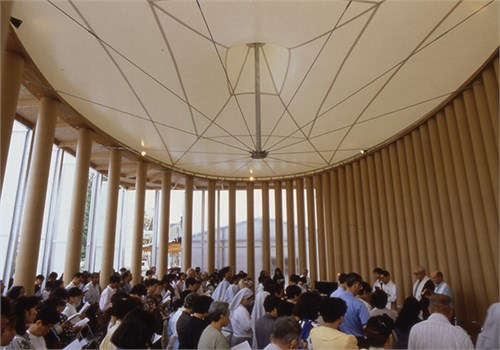
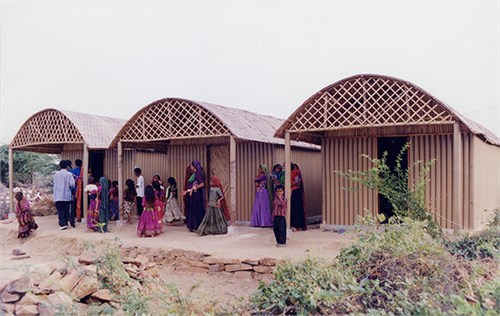
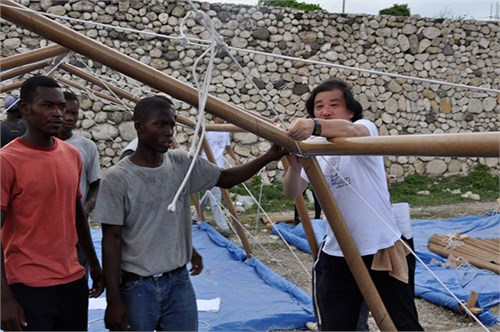
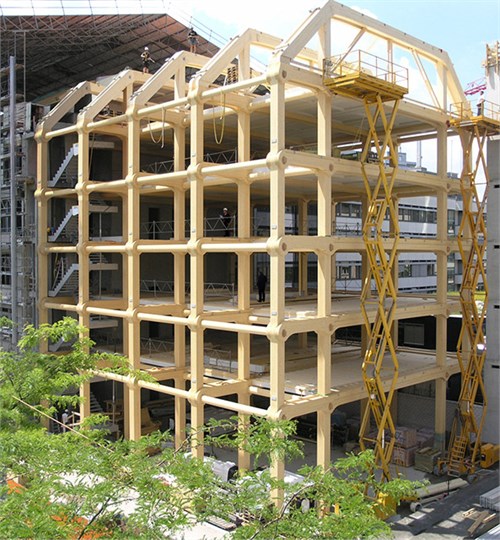





所有评论